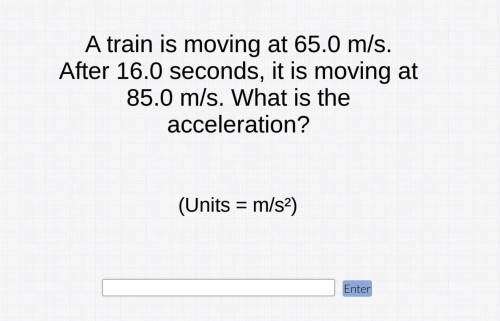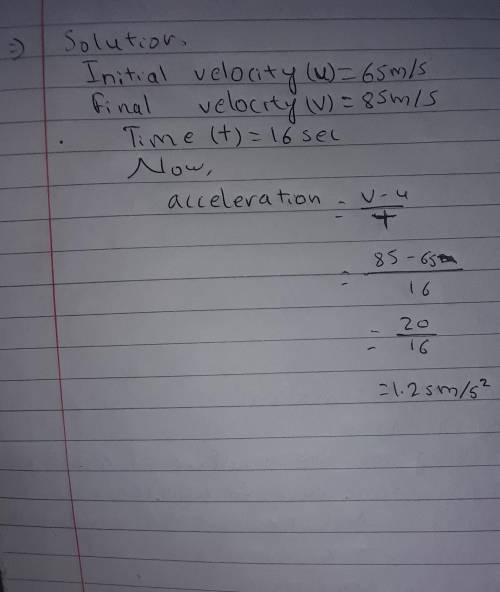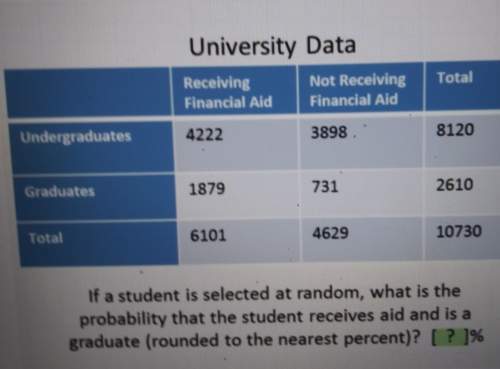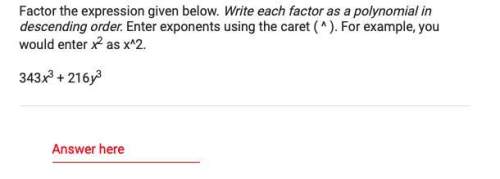
Mathematics, 25.12.2021 14:00 zitterkoph
A train is moving at 65.0 m/s. After 16.0 seconds, it is moving at 85.0 m/s. What is the acceleration?


Answers: 2


Other questions on the subject: Mathematics

Mathematics, 21.06.2019 16:00, brittneeyy
Atrucker had a load of grain containing 2 tons. she unloaded 1 ton and 1,200 pounds at the warehouse. how much grain does she still have left on the truck?
Answers: 1

Mathematics, 21.06.2019 16:40, Thomas7785
Which of the following is most likely the next step in the series? a3z, b6y, c9x, d12w, е15v, f18u
Answers: 2

Mathematics, 21.06.2019 17:00, yannabby26
The accompanying table shows the numbers of male and female students in a particular country who received bachelor's degrees in business in a recent year. complete parts (a) and (b) below. business degrees nonbusiness degrees total male 189131 634650 823781 female 169539 885329 1054868 total 358670 1519979 1878649 (a) find the probability that a randomly selected student is male, given that the student received a business degree. the probability that a randomly selected student is male, given that the student received a business degree, is nothing. (round to three decimal places as needed.) (b) find the probability that a randomly selected student received a business degree, given that the student is female. the probability that a randomly selected student received a business degree, given that the student is female, is nothing. (round to three decimal places as needed.)
Answers: 2

Mathematics, 21.06.2019 21:30, gonzalezashley152
In a test for esp (extrasensory perception), the experimenter looks at cards that are hidden from the subject. each card contains either a star, a circle, a wave, a cross or a square.(five shapes) as the experimenter looks at each of 20 cards in turn, the subject names the shape on the card. when the esp study described above discovers a subject whose performance appears to be better than guessing, the study continues at greater length. the experimenter looks at many cards bearing one of five shapes (star, square, circle, wave, and cross) in an order determined by random numbers. the subject cannot see the experimenter as he looks at each card in turn, in order to avoid any possible nonverbal clues. the answers of a subject who does not have esp should be independent observations, each with probability 1/5 of success. we record 1000 attempts. which of the following assumptions must be met in order to solve this problem? it's reasonable to assume normality 0.8(1000), 0.2(1000)%30 approximately normal 0.8(1000), 0.2(1000)% 10 approximately normal srs it is reasonable to assume the total number of cards is over 10,000 it is reasonable to assume the total number of cards is over 1000
Answers: 1
You know the right answer?
A train is moving at 65.0 m/s. After 16.0 seconds, it is moving at 85.0 m/s. What is the acceleratio...
Questions in other subjects:



Mathematics, 03.08.2020 14:01

Chemistry, 03.08.2020 14:01

Physics, 03.08.2020 14:01

History, 03.08.2020 14:01


Mathematics, 03.08.2020 14:01









